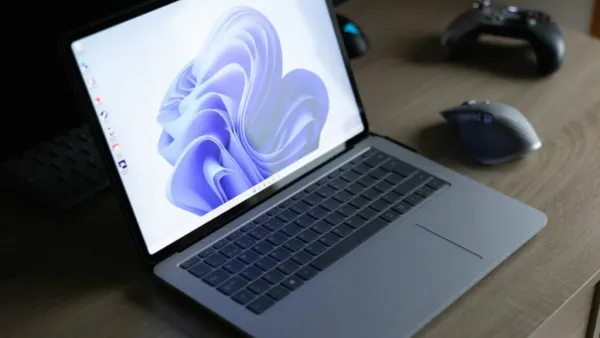
Choosing the right student laptop in 2025 means juggling affordability, performance, and durability – especially when budgets are tight and coursework ranges from online classes and document editing to coding, design, and light gaming.
With budgets in the ₹40,000-50,000 range in India and diverse coursework—ranging from online classes and document editing to coding, design, and light gaming – brands like HP Laptop 15 (Ryzen 5 7520U), ASUS Vivobook 15 (Intel Core i3), and Infinix Zerobook 13 stand out in 2025.
Each brand has a unique focus: HP is known for its reliable hardware, ASUS offers excellent value and choices, and Infinix is a newer brand with impressive specifications at competitive prices. This article outlines what students should prioritize, compares the brands, and helps readers make a smart purchase.
When it comes to a student’s laptop, four main criteria are key.
First is performance and multitasking. Coursework may involve web conferencing, compiling code, managing spreadsheets, and streaming videos simultaneously.

Therefore, processors such as Intel Core i3 or Ryzen 3, along with 8 GB of RAM and SSD storage, are essential.
Second is portability and battery life. A lightweight laptop that lasts through study sessions is crucial.
Third is the display and keyboard. Since students spend long hours reading, writing, and watching, a good 15.6-inch or 14-inch Full HD screen and a comfortable keyboard are essential.
Fourth is reliability, service, and build quality. Students need a laptop that doesn’t frequently break down and has strong after-sales support.
Additionally, features such as sufficient ports (USB and HDMI), WiFi 6 support, RAM and SSD upgrade options, and considerations for design (cooling and fan noise) also affect usability in real-life settings. A good student laptop balances these factors instead of chasing ultra-premium specifications.
HP is one of the most established laptop brands in India and worldwide, offering solid support networks and trustworthy hardware. For example, the HP student model features a 15.6-inch FHD display, a Ryzen 5 7520U processor, 8 GB of RAM, and a 512 GB SSD, all at a price many students can afford. HP’s main strengths are brand trust, build quality, and service.
Many students appreciate knowing that local service centers are available and that warranty claims are straightforward. On the downside, HP’s budget models might not offer the best battery life or portability compared to thinner competitors. Promotions also play a role – the price may depend on bank offers or student discounts.

In practical terms, HP is ideal for students who value stability, less maintenance, and a “safe” purchase, especially those focused on academic tasks, documents, presentations, and general computing rather than heavy gaming or extreme portability.
ASUS offers a wide range of models, substantial value for money, and good specifications. Many ASUS laptops priced under ₹40,000 (around ₹35–40k) come with Ryzen 5 or Intel i3, 8–16 GB RAM, and 512 GB SSD, weighing about 1.6 kg, making them very student-friendly. ASUS also often offers slimmer designs, a variety of ports, and extra features like backlit keyboards or higher-resolution displays in some models.
ASUS stands out for its choice and performance for the price. Students interested in coding, photo editing, lighting design, or multimedia will find ASUS appealing. Some trade-offs might include less service coverage compared to HP and cheaper models that could compromise battery life or cooling. However, for versatile student use, ASUS offers one of the best values.
Infinix is a newer player in the laptop market in India and beyond. It aims to attract budget-conscious students with aggressive specifications and stylish designs. For instance, the Infinix InBook X2 Slim launched at ₹29,990 for an 11th Gen Intel Core i3 variant.
While the specs look good on paper, students should exercise caution. User reports have highlighted concerns regarding after-sales service, durability, and real-world performance. For example, one Reddit user noted issues with thermal performance, battery drain, and ineffective service centers to Infinix laptops.

Thus, Infinix appeals to budget-focused students willing to take risks—those who prioritize raw specs and price over dependable brand service. The upside is that you might get more value for your money; the downside is potential downsides in support and durability.
When comparing these brands, some specific features stand out:

In 2025, students no longer have to spend excessive amounts on a capable laptop. They can find reliable machines for under ₹40,000 to ₹50,000 in India, or equivalent prices elsewhere, depending on deals.
HP, ASUS, and Infinix offer distinct advantages: HP provides reliability, ASUS offers excellent value and flexibility, and Infinix emphasizes affordability and specs. Students should choose a laptop based on their usage patterns rather than solely focusing on specifications. For most students, a mid-range ASUS or HP will meet their needs for years of study, projects, and multimedia tasks better than a brand new high-spec machine with weak support.
Ultimately, select a laptop that won’t become a limitation halfway through the semester. A good student laptop should be ready to use right away, last through the semester, and remain maintainable. By considering these factors and weighing the pros and cons of HP, ASUS, and Infinix, students can make informed decisions and focus more on their coursework than on tech problems.